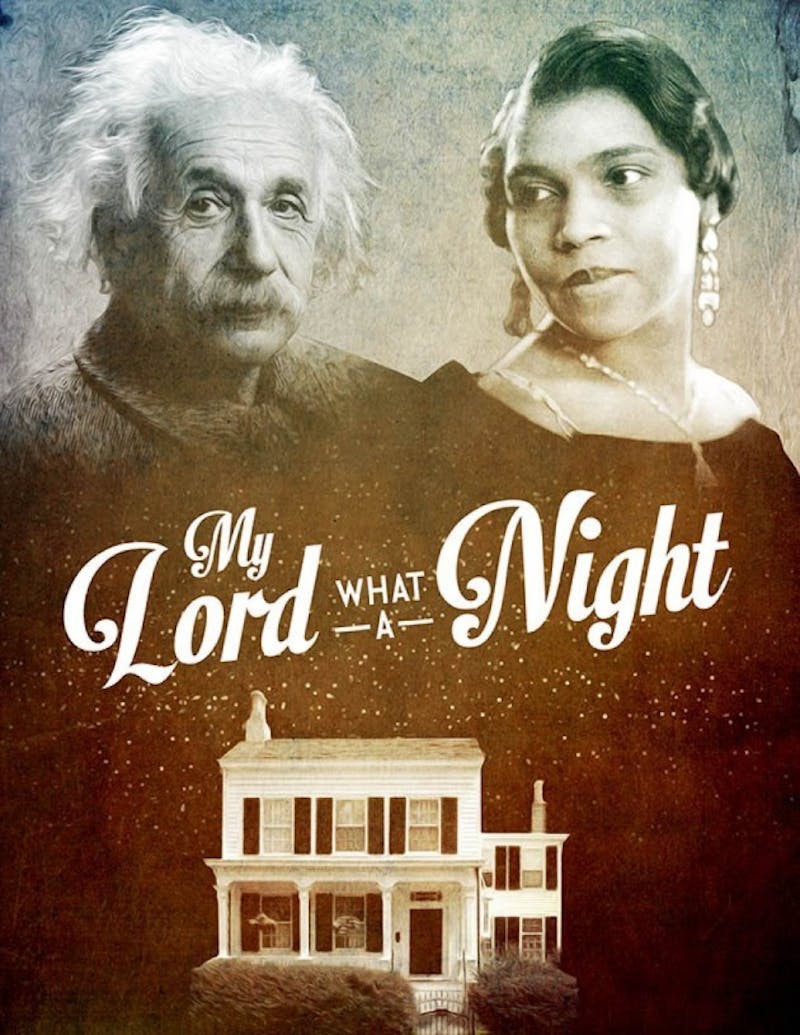Bridget Gabbe as Bridget and W. Tré Davis as Jonas in Keith Josef Adkins's The People Before the Park at Premiere Stages
Photo courtesy of Premiere Stages
Central Park is characterized by unparalleled infamy as one of New York City’s (NYC) most notorious landmarks. An enormous symbol, it stretches between 5th Avenue and Central Park West. But these 834 acres were not always a park. In fact, its very creation was the destruction of something very different. The People Before the Park is a play illustrating this very event in New York’s history.
Every year, area playwrights are invited to submit their unproduced scripts to a Play Festival. This year, there were more than 440 submissions and People Before the Park was the winning play. The story follows various characters as they combat unexpected circumstances and fight for the only homes they’d ever known. A notorious duo, Keith Josef Adkins wrote the play and John J. Wooten directed. Adkins is the co-founder of The New Black Fest, a “theater organization dedicated to new and provocative playwriting, music and discussion from the African Diaspora.” Wooten is the producing artistic director for Premier Stages. Wooten explains why they thought the play was an apt production contemporarily. He states, “even though its mid-19th century there’s a lot of parallels to contemporary society; race relations very much in the mindset of today, eminent domain, home equating identity.”
Detailed historical maps place it between 82nd and 89th Streets and Seventh and Eighth Avenues. It is said to have been established a few years after slavery was officially abolished in New York. In no time at all, the community grew to almost 300 homes, with about 2/3 of the residents being African-American. Seneca Village was Manhattan’s first considerable community of African American property owners. By the 1850s, the village flourished into a multi-ethnic community as there was a heavy flow of European immigrants. The community established three churches, a school and a few cemeteries. Reports claimed that the Seneca Village residents were squatters, when in truth most of them were working-class and middle-class property owners.
As a new expenditure, the city chose to pursue the placement of the park in Seneca Village, leaving the original residents homeless. A colossal initiative, the city ran through Seneca Village, uprooting countless families. As the city noticed a pattern of resistance from residents, the mayor turned to a law recently passed by the state legislature. The law of "Eminent Domain" allowed the government to seize private property for public purposes. Police took to enforcing the law by threats, brutality and intimidation. Eventually they successfully snuffed out what was once Seneca Village.
As people flooded in and filled the seats of Wilkins Theatre, the lights dimmed and the audience was transported back to NYC in 1856. The story was centered on a hard-working man named Stephen and his son who are long-time residents of Seneca Village. The two lead very simple, peaceful lives. Along with hundreds of others, their lives are disrupted by the city’s motives. The city chose to displace this thriving community in exchange for the world-renowned central park. Many of the residents look to Stephen because of his strong and brazen attitude. As a sharp, sometimes selfish man, he has no interest in being their leader. He, along with his neighbors and friends, are left without any other choice. Those who granted the city’s request to leave were offered less than full value for the homes they were deserting. While others, like the main character, refused to abandon the only homes they had known. While NYC had its challenges, it was still home to the people; where they grew up, made memories, found love, nurtured families, and buried loved ones. To them, it was more than a plot on the ground to be blueprinted and bulldozed.
Betsey De La Cruz, senior biotechnology major, states,
“The play was amazing. I really enjoyed it because everything was so clear and well performed. We can learn that we should never lose faith in ourselves...and students can understand and appreciate the history of the places (like Seneca Village) in the United States.”
As this may leave a bitter taste in people’s mouths about Central Park, Wooten explains the actual message. He states, “The message of the play is not what a terrible place Central Park is but that we need to honor and respect each other. NYC is as much a melting pot as it was then. [People should] Honor and respect each other and what we share, but also what makes us unique.”
Wooten explains why they thought theater was the perfect medium of expression for the story. “Good theater can challenge you, motivate you and inspire you, and this piece certainly did that. I think the all the arts have the potential to challenge us to not only think about the issue explored but also to take action… And rather than thinking about it for the rest of the day, people will think about it every time they visit central park.”
To see what other performances will be coming to Kean University, a season brochure can be ordered by calling the Kean Stage Box Office at 908-737-SHOW (7469) or visiting Premiere Stages online.

W. Tré Davis as Jonas and Michelle Wilson as Phoebe in Keith Josef Adkins's The People Before the Park at Premiere Stages
Photo courtesy of Premiere Stages






